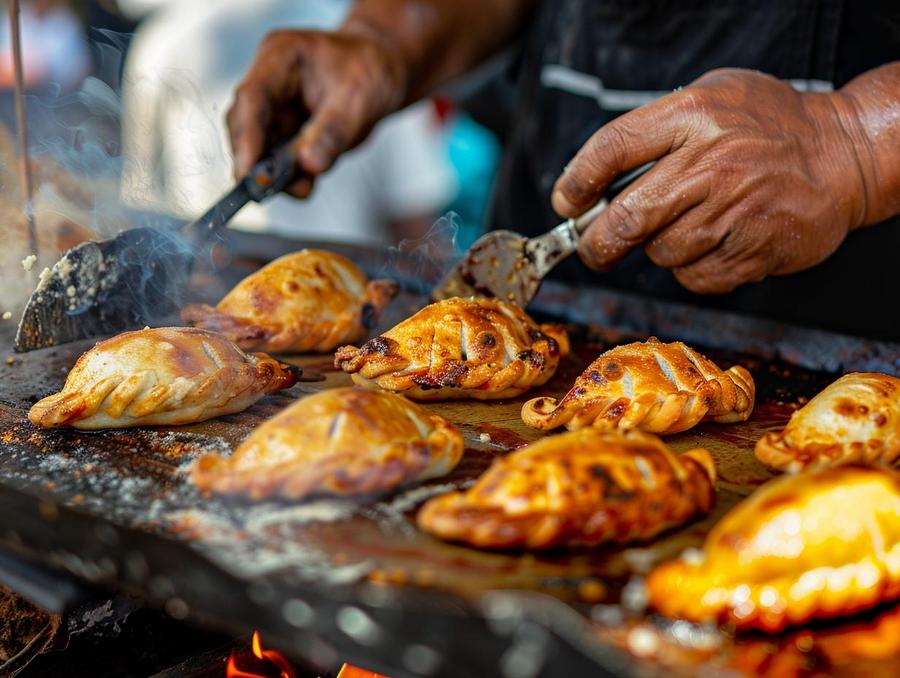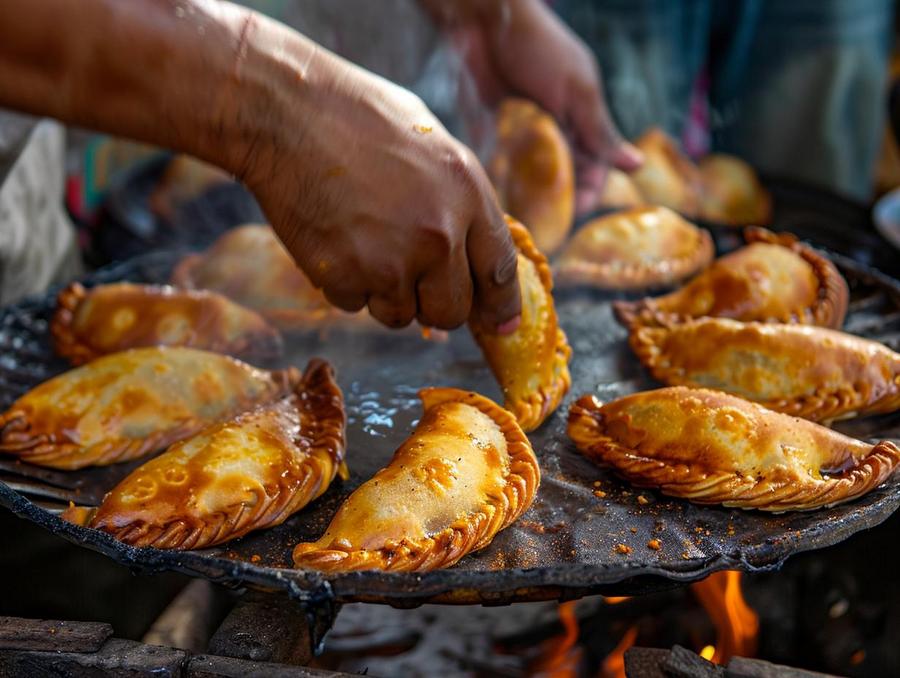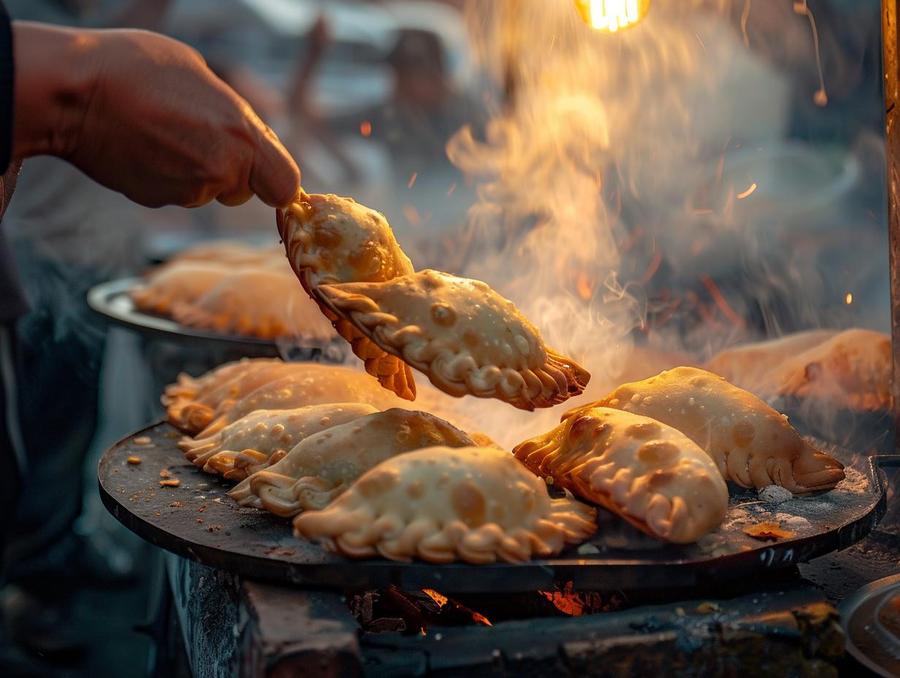Embark on a gastronomic journey as we delve into the rich tradition of Empanadas Guatemaltecas. These culinary gems are more than just a sweet treat; they're an integral part of Guatemala's vibrant culture. From the classic empanadas de manjar to variations like chicken and potato, each bite is a flavorful exploration of Guatemalan heritage. Ready to savor these delicacies and learn how to create them at home? Let's get started!
TL;DR:
- Empanadas Guatemaltecas are a staple in Guatemalan food culture, filled with a sweet custard called 'manjar'.
- Origins of these pastries are unclear but they've become a beloved part of the Guatemalan food tradition.
- Other variants include chicken and potato empanadas.
- Key ingredients for dough include flours, salt, sugar, margarine, eggs, hot annatto water, and icing sugar.
- Manjar filling for Empanadas involves milk, sugar, salt, cinnamon, and cornstarch.
- Best empanadas can be found in Guatemalan food stores and restaurants, but making them at home offers unparalleled joy.

What Are Empanadas Guatemaltecas?
Empanadas Guatemaltecas are sweet treats that show off the rich culinary culture of Guatemala. The word 'empanada' comes from the Spanish verb 'empanar', which means to wrap or coat in bread. Empanadas Guatemaltecas, however, are unique. They're often filled with a sweet custard known as 'manjar', creating a delightful contrast between the crisp pastry and the creamy filling.
What is the origin of empanadas guatemaltecas?
The origin of these tasty pastries is a bit of a mystery. Some say they were brought to Guatemala by Spanish colonists, others believe they have Mayan roots. Regardless of their origin, these empanadas have become a beloved part of Guatemalan food culture.
What are the different types of empanadas guatemaltecas?
While empanadas de manjar guatemaltecas are the most well-known, there are also other types of empanadas in Guatemalan cuisine. For instance, you might come across empanadas de pollo guatemaltecas, filled with savory chicken, or empanadas de papa guatemaltecas, stuffed with potato. Each version is a culinary delight in its own right, offering a taste of the rich and diverse flavors of Guatemala.
How to Make Empanadas Guatemaltecas?
So, you want to make empanadas Guatemaltecas? Let's dive in!
What ingredients do you need for making empanadas guatemaltecas?
You will need flour, salpor flour, salt, sugar, baking powder, margarine, eggs, hot water with annatto, and icing sugar for the dough. For the filling, prepare milk, sugar, salt, cinnamon, and cornstarch.
What are the steps for making empanadas guatemaltecas?
First, sift the flours. Cream the margarine with sugar, add eggs, then the hot annatto water. Knead, roll out and cut into circles. Fill with manjar, fold the dough in half, press the edges with a fork, and bake at 350 °F until golden. Dust with icing sugar.
Now, for the manjar. Cook the milk with sugar, salt, cinnamon, and cornstarch until it thickens and boils.
That's it! You've made empanadas Guatemaltecas. Enjoy this sweet treat that represents the rich culinary culture and tradition of Guatemala.

How to Make Manjar for Empanadas?
What ingredients do you need for making manjar?
To make manjar, a sweet cream filling, you need milk, sugar, salt, cinnamon, and cornstarch (maicena in Spanish).
What are the steps for making manjar?
First, put milk, sugar, salt, and cinnamon in a pot. Turn on the heat. Stir well to mix all the ingredients. Now, add cornstarch to the pot. Keep stirring until the mix thickens and boils. Voila! You have your manjar.
Manjar is the heart of Guatemalan empanadas. Its creamy, sweet taste pairs well with the soft, flaky dough of the empanada. It's a flavor that brings back memories of home and family gatherings for many Guatemalans. Whether you're making empanadas for a special occasion or just a regular day, preparing the manjar is a crucial step that shouldn't be skipped.
Remember, the key to a good manjar is patience. The mixture needs constant stirring to prevent it from burning. Also, the heat should be moderate. Too high a heat can cause the milk to burn, giving the manjar a bitter taste. Too low a heat, and the mixture will take too long to thicken.
Making manjar may seem intimidating at first, but with practice, you can master it. Once you do, you'll be one step closer to creating delicious Guatemalan empanadas right in your own kitchen. Enjoy the process, and happy cooking!
Where to Find Empanadas Guatemaltecas?
Where can you buy the best empanadas guatemaltecas?
You can find top-notch empanadas guatemaltecas in many Guatemalan food stores and restaurants. They're a popular treat all year round, not just during Lent. However, the joy of making them at home is unmatched.
How can you make empanadas guatemaltecas at home?
Home cooks can try the empanadas guatemaltecas receta, a beloved Guatemalan recipe. The dough includes wheat flour, royal, sugar, salt, salpor flour, margarine, eggs, and hot water with achiote. The filling, or manjar, is made with milk, sugar, salt, cinnamon, and cornstarch.
Making these empanadas involves sifting flours, creaming butter with sugar, adding eggs, incorporating hot water with achiote, kneading, rolling, cutting into circles, filling with manjar, folding the dough in half, pressing the edges with a fork, and baking at 350 °F until golden. Then dust with powdered sugar.
Making manjar involves cooking milk with sugar, salt, cinnamon, and cornstarch until it thickens and boils.
Empanadas guatemaltecas are a sweet representation of rich Guatemalan culinary culture and tradition. With this in mind, it's worth noting that there are other types of empanadas in Guatemalan cuisine, like chicken and potato ones. It's a vibrant part of the historia de la gastronomía guatemalteca and a delightful part of comida de Guatemala recetas.
Whether you buy them or make them, empanadas guatemaltecas are a taste of Guatemala that you won't soon forget.
In this post, we've explored the rich culture of Guatemala through the lens of its delicious empanadas. We've delved into their origin, the different types, and even shared tips on how to make them at home. The journey doesn't end here though. Keep exploring, trying new recipes, and sharing your love for Latin cuisine. Remember, each bite tells a story of tradition and culture. Happy cooking!



